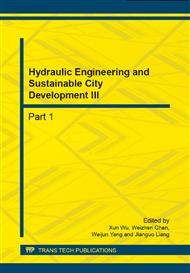p.818
p.824
p.829
p.833
p.839
p.848
p.853
p.860
p.866
Correlation Degree Model of Urban Signalized Intersection Group Based on Turning Flows
Abstract:
This article analyzes the limitations of calculating correlation degree based on road sections and built correlation model based on the turning flow of the intersection. In addition to the traditional contributing factors, the model considers two other key factors——turning proportion of intersections and signal phase. Therefore, the proposed model can reflect the spatial and temporal heterogeneity between each turning flows on a road section. A case study to four actual intersections is conducted to test the effectiveness of this model. The results show that the proposed correlation model can better descript the relationship of adjunct intersections and find the critical route for signal coordination.
Info:
Periodical:
Pages:
839-847
Citation:
Online since:
September 2014
Authors:
Price:
Сopyright:
© 2014 Trans Tech Publications Ltd. All Rights Reserved
Share:
Citation:


